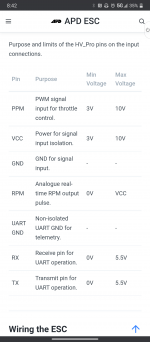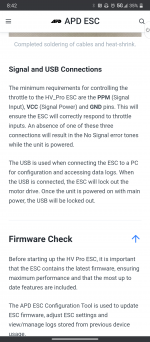Ok question for all you smart and/or in the now guys. I have been thinking of a why to control the ESC with Throttle Position from the car.
Have more that few ideas, one idea was to use an e-bike thumb throttle control wire into an ESC servo tester and mount at the accelerator pedal and as the pedal is pressed it would start the blower motor. Position it kind of like a WOT switch but better as you can position it to start at about 70% of WOT. This is honestly really an easy mod to do. So that is one way i've been think about thing it.
So question is:
So do you guys think using the same Servo Tester wired to Throttle position would do the same thing. My thinking is that just like the E-Bike thumb throttle, the TPS changes the voltage from 0-5V and the modified servo tester should be able control the speed of the motor by the car's TPS via the ESC unit just the E-Bike thumb throttle does and/or can.
Now if the ESC unit used has an analog to Digital convert it should we should be to tap directly into the TPS and control the speed of the motor be our throttle position.
However I noticed that Troqamp has a control box that does this exact thing by Connection to the TPS

 torqamp.com
torqamp.com
On natural aspirated cars you simply tap into the TPS signal and it allows you to control the ESC/motor speed by throttle position. The unit is open source so you can program the unit with Arduino. So basically you can program the unit to say at 70% of full throttle give me 70% boost or motor speed and at WOT give me 100%.This also should allow us to boost in that sweet spot of the rpm range. Moreso make the system operate... for lack of better words like a normal force induction setup.
The Troqamp control units is $159 shipped to the U.S. would it be worth it buying one to see if it would work with other ESC units. I don't see way it wouldn't. However A nice little servo tester is only about 10 bux for about 3 of them. and it is honestly a mod that can be done in about 20 mins. You can even get ones that have adjustable pulse width. Or get an ESC that can convert the analog signal to Digital.
I might be simplifying this a bit to much.
Thoughts and ideas?
Have more that few ideas, one idea was to use an e-bike thumb throttle control wire into an ESC servo tester and mount at the accelerator pedal and as the pedal is pressed it would start the blower motor. Position it kind of like a WOT switch but better as you can position it to start at about 70% of WOT. This is honestly really an easy mod to do. So that is one way i've been think about thing it.
So question is:
So do you guys think using the same Servo Tester wired to Throttle position would do the same thing. My thinking is that just like the E-Bike thumb throttle, the TPS changes the voltage from 0-5V and the modified servo tester should be able control the speed of the motor by the car's TPS via the ESC unit just the E-Bike thumb throttle does and/or can.
Now if the ESC unit used has an analog to Digital convert it should we should be to tap directly into the TPS and control the speed of the motor be our throttle position.
However I noticed that Troqamp has a control box that does this exact thing by Connection to the TPS

Control Box - TORQAMP
MEETTHE CONTROL BOX CONTROL YOUR TORQAMP IN A MORE FLEXIBLE WAY BUY NOW €99 Control Box Downloads THE CONTROLBOX Our Open-source Control Box can be used to optimize the TORQAMP specially for your application. You can connect TPS, a PWM signal and or your intake manifold pressure as input signals...
 torqamp.com
torqamp.com
On natural aspirated cars you simply tap into the TPS signal and it allows you to control the ESC/motor speed by throttle position. The unit is open source so you can program the unit with Arduino. So basically you can program the unit to say at 70% of full throttle give me 70% boost or motor speed and at WOT give me 100%.This also should allow us to boost in that sweet spot of the rpm range. Moreso make the system operate... for lack of better words like a normal force induction setup.
The Troqamp control units is $159 shipped to the U.S. would it be worth it buying one to see if it would work with other ESC units. I don't see way it wouldn't. However A nice little servo tester is only about 10 bux for about 3 of them. and it is honestly a mod that can be done in about 20 mins. You can even get ones that have adjustable pulse width. Or get an ESC that can convert the analog signal to Digital.
I might be simplifying this a bit to much.
Thoughts and ideas?
Last edited:



